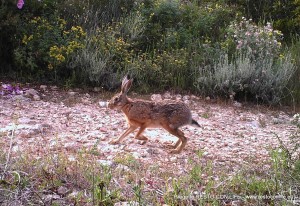
Sometimes discoveries happen by chance, when they are least expected and when certainties have opened up other avenues. This occurred at Pianosa, an island of the Tuscan Archipelago, where a workgroup for the Life project co-financed by the European Commission found some surprising evidence: the hare population, although a result of local introduction, still have all genes intact from the original European hare of Italy, the so-called “Lepus europaeus meridiei”, that is now completely extinct in the mainland territory. This is the conclusion that was reached by the researchers and technicians of the Tuscan Archipelago National Park and the Institute for Environmental Protection and Research (ISPRA), who are engaged in restoring the native fauna of the Tuscan islands. During winter several hares were captured and examined, thanks to collaboration from expert volunteers in hare catching from various national hunting management units of Tuscany, Emilia Romagna and Abruzzo. The animals, seen up close, show very slight differences in size and colour compared to the common European hare; these factors gave rise to the doubt that in researchers’ minds must always push them to revise their beliefs and verify the impossible. The genetic analysis carried out by the ISPRA Genetics laboratory confirmed the unexpected truth: the population derives from hares possibly introduced in the mid-nineteenth century by convict settlement authorities and thanks to their isolation they have maintained their characteristics, contrary to what happened in the rest of Italy where introduction of hares from Central Europe irrevocably contaminated the original appearance and genotype. Thus the blue Pianosa hare, which is slightly cerulean in colour to its rear, can tell the tales of the past and will keep researchers, technicians and expert volunteers busy from here on, in monitoring and protecting this unique and priceless entity. A pearl of biodiversity that has come to light due to the desire to learn about and restore Mediterranean protected environments and that reveals how much more the Tuscan Archipelago islands may hide.
TUSCAN ARCHIPELAGO NATIONAL PARK
INSTITUTE FOR ENVIRONMENTAL PROTECTION AND RESEARCH




